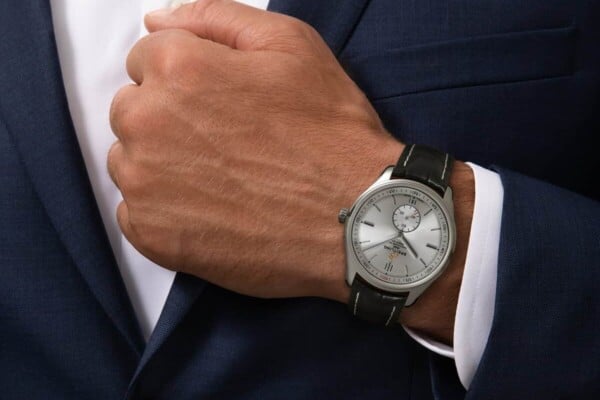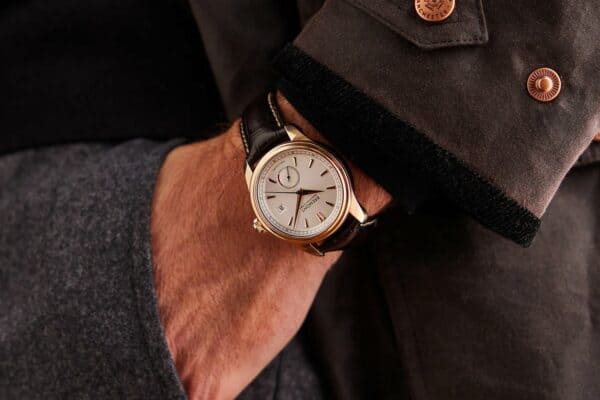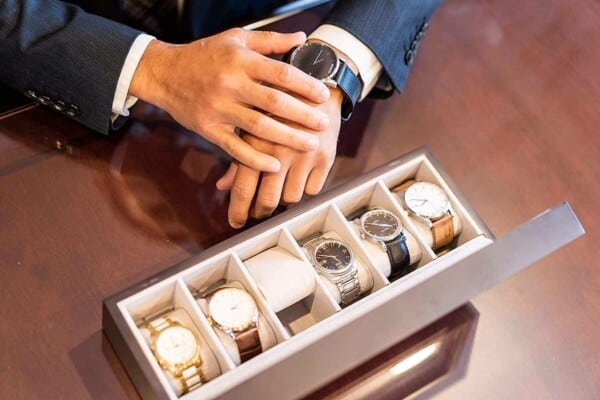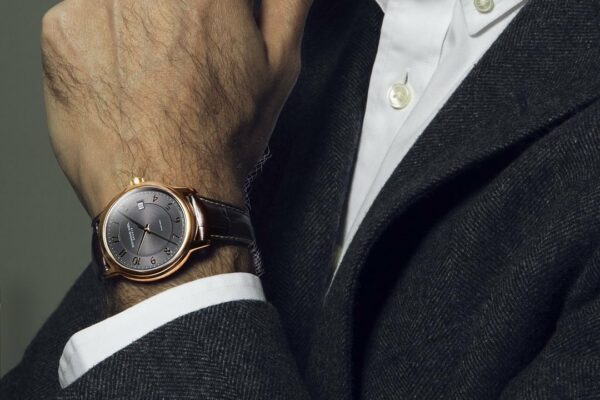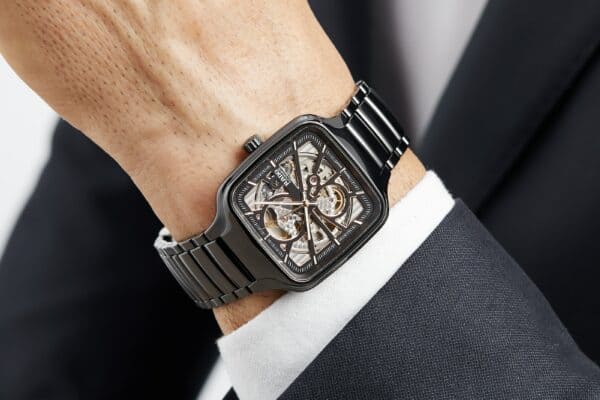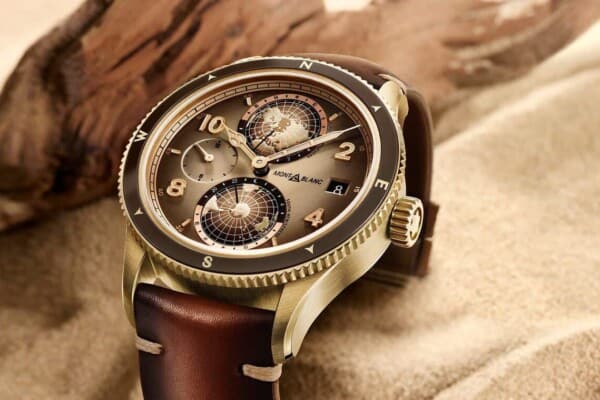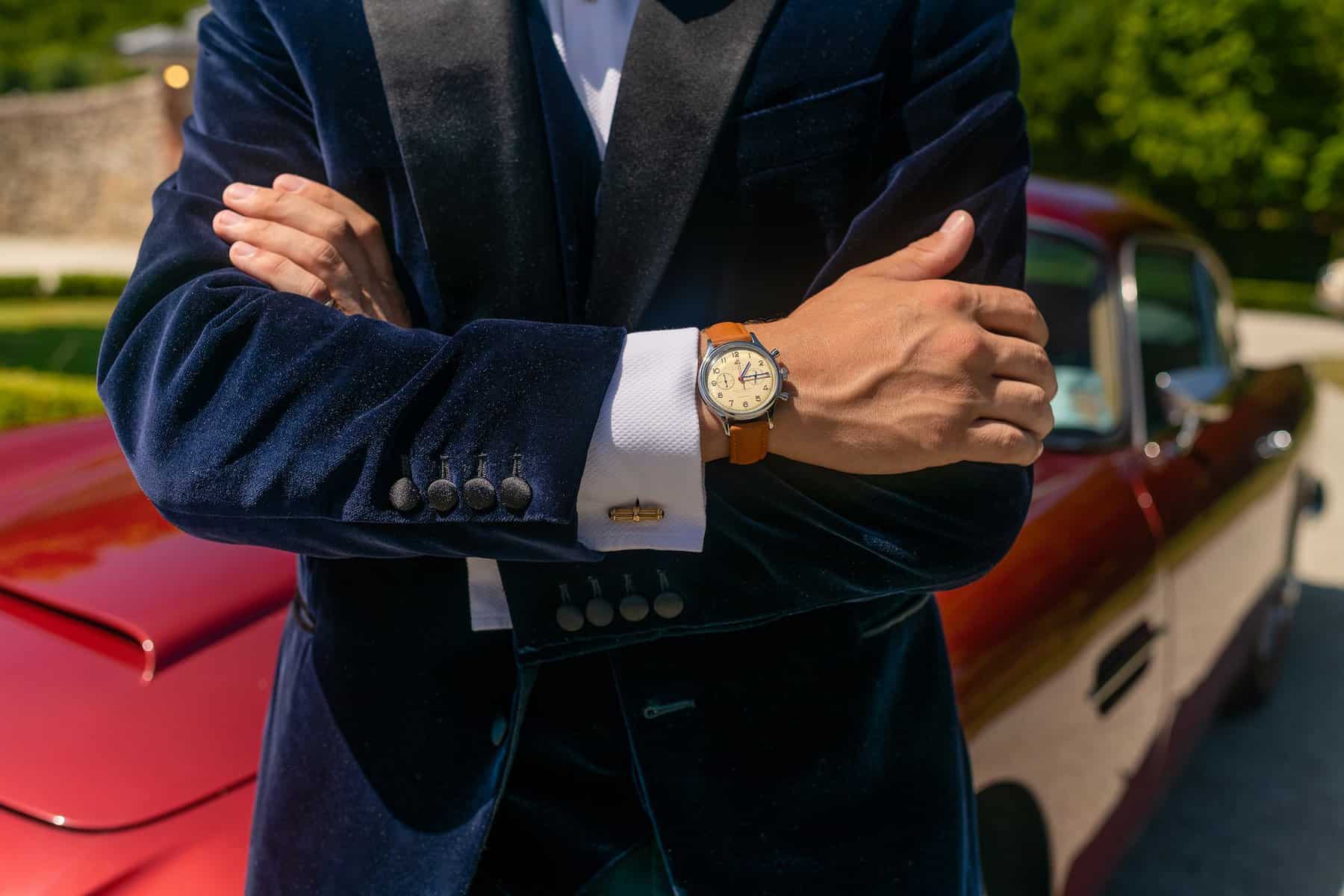
There are watches and then there are one-off timekeeping marvels. The first indicate the actual time. The latter reveal the type of man you are: one who values craftsmanship, heritage, and effort.
Usually, this kind of timepieces is made in a secluded part of Switzerland, where, in addition to cogs, gears, and precious metals, the craftsmen add something unfathomable and more valuable than just telling the time: class.
Open any watch magazine, browse every online site, or enter any jewelry store, and you will be overwhelmed by the selection of timepieces available. Never before have there been so many options. Not only are a plethora of companies and models involved, it seems that each year a new type of watch is created.
Are you a sportsman? A watch is waiting for you. A pilot? You are covered. A successful CEO? There you go! It is no surprise that choosing a timepiece can be so challenging. This is because watches are neither purely technological nor merely ornamental. They are worn for their artistic value, but they also serve functional purposes.
If you’re interested in becoming a watch aficionado or you’re currently one, but know very little about the timepiece you carry on your wrist, this article is for you.

We shall cover the fundamentals of watches, from examining the advantages and disadvantages of several mechanisms to detailed information about primary models of men’s timepieces.
But, we must warn you, this is not an easy stance to take. One of the most common misconceptions about the world of watches, or “horology”, to use its full name, is that it can feel elitist or even outright exclusive.
And we get it! We understand why you may think that way. It’s a realm teeming with words. In certain instances, it is a world tinted with pretentiousness. If you ask a watch enthusiast to explain the mismatch between a mechanical and an automatic timepiece, be prepared for an arched eyebrow and a “you little fool” grin.
However, we are not one of those. We wish to introduce you to watches. Regardless of your own taste, there is a watch type that complements your wrist, and this post will provide you with some information about each.
Here you will find a comprehensive guide to men’s timepieces, with all the relevant data presented in an approachable and straightforward manner. Without any further ado, the first thing you must learn is that watch types can be categorized into three major groups, as shown below.
Types of Watches Based on Their Function and Design
In addition to telling time and being a fashionable accessory, watches have served a variety of other tasks over the years. So we’ve got:
1. Pilot Watches
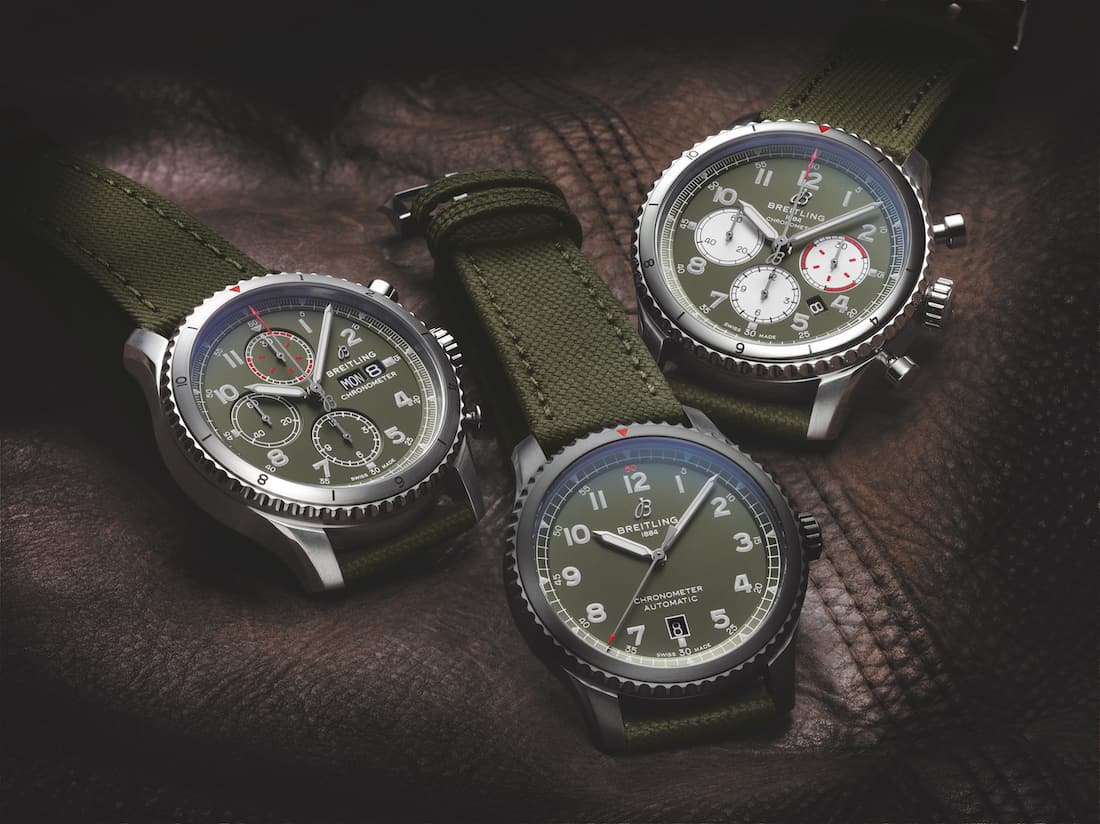
In 1911, when Cartier created the first aviation timepiece for pilot Alberto Santos Dumont, aviator watches took the skies and stayed in the air to this very day. In the ensuing years, watchmakers improved the initial model to make things easier for pilots, particularly by adding a chronograph.
This type of watch is wonderful for the skies and everything else as well, thanks to the fact that it strikes the optimal mix between complexity and timelessness. In the 1930s, the Swiss company Breitling manufactured onboard chronographs for the Royal Air Force so that aviators could measure their velocity, distance covered, and fuel usage.
Generally, these timepieces are constructed from resilient materials that can withstand tremendous pressure or trauma and will remain operational even if they are exposed to water or mud. They also have big, easily-read dials, and the hands illuminate so that the pilot can operate the watch in low-light settings.
How to Rock: Because pilot watches are small and have a casual look, they go well with informal clothes, but you should avoid wearing them with black tie or business attire.
2. Dress Watches

Even though the title sounds extravagant, this timepiece will be your lifesaver on days when you do not wish to appear excessive. It was created in the early 20th century for wealthy gentlemen who wished to carry their watch on their wrist instead of in their pocket. The dress watch embodies elegance and minimalism, being streamlined rather than cumbersome.
Everything about this timepiece is subtle, from the overall refinement of the design to the dial. As the watch that looks most like jewelry, it should be classy enough to go with any outfit but low-key enough not to draw too much attention to itself.
The ultimate dress watch is typically linked to a leather strap and boasts roman numerals, a plain face, and the absence of embellishments. Moreover, it is extremely thin so that it can remain undetected under the wearer’s cuff until he wants it.
When to Wear: As its name indicates, the dress watch should not be worn with jeans or at informal parties; it complements business or formal attire.
3. Dive Watches
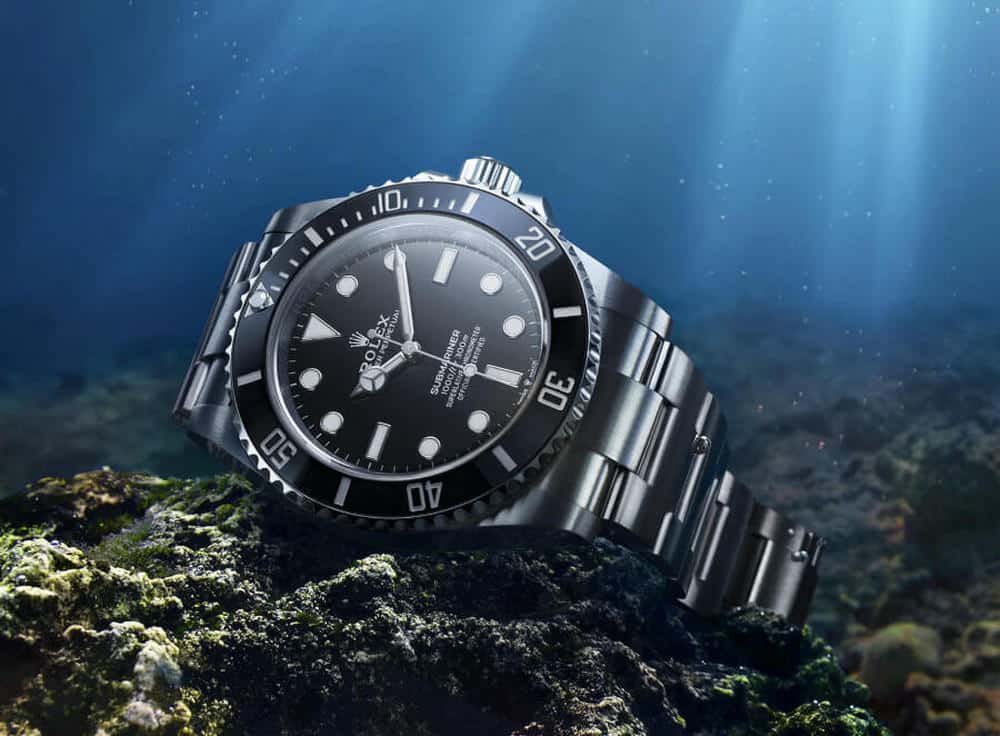
The dive timepiece is likely one of the most prevalent types of watches seen on men. And we can undoubtedly blame James Bond for that. The Rolex Oyster, which was released in 1930, was arguably the original version of what became the diving watch. With its completely sealed case, it was one of the first timepieces on the market to be water-resistant.
As predicted, the diving watch is expected to behave in the depths of the ocean. However, most of these timepieces never even come in contact with water, as many men choose them due to their robust design, illuminating dials, and hands, as well as a strong rotating bezel, all of which make for an impressive watch.
How to Wear: The dive watch can be worn with casual clothing, sportswear, smart casual attire, and business formal outfits. If you borrow style insights from James Bond, you can even rock a dive watch with a tuxedo.
4. Military or Field Watches

The field watch is descended from the “trench watch” of World War I, which was developed for officers who had to conduct raids, tell time at night, and wear a timepiece that could resist the hardships of combat while still appearing decent.
Prominent in the military, this tactical design has endured to the present day, and most men favor it because it is made to sustain extreme pressure or damage without failing. It also has easy-to-read dials and works well in low-light, making it a versatile addition to your portfolio.
When to Don: Field watches are quite adaptable and can be used for a variety of outdoor activities, casual attire, or even business casual clothing. Therefore, anything from denim and a t-shirt to a sports jacket and khakis is acceptable. If you rarely don a suit, a field watch is your best bet.
5. Racing or Driving Watches
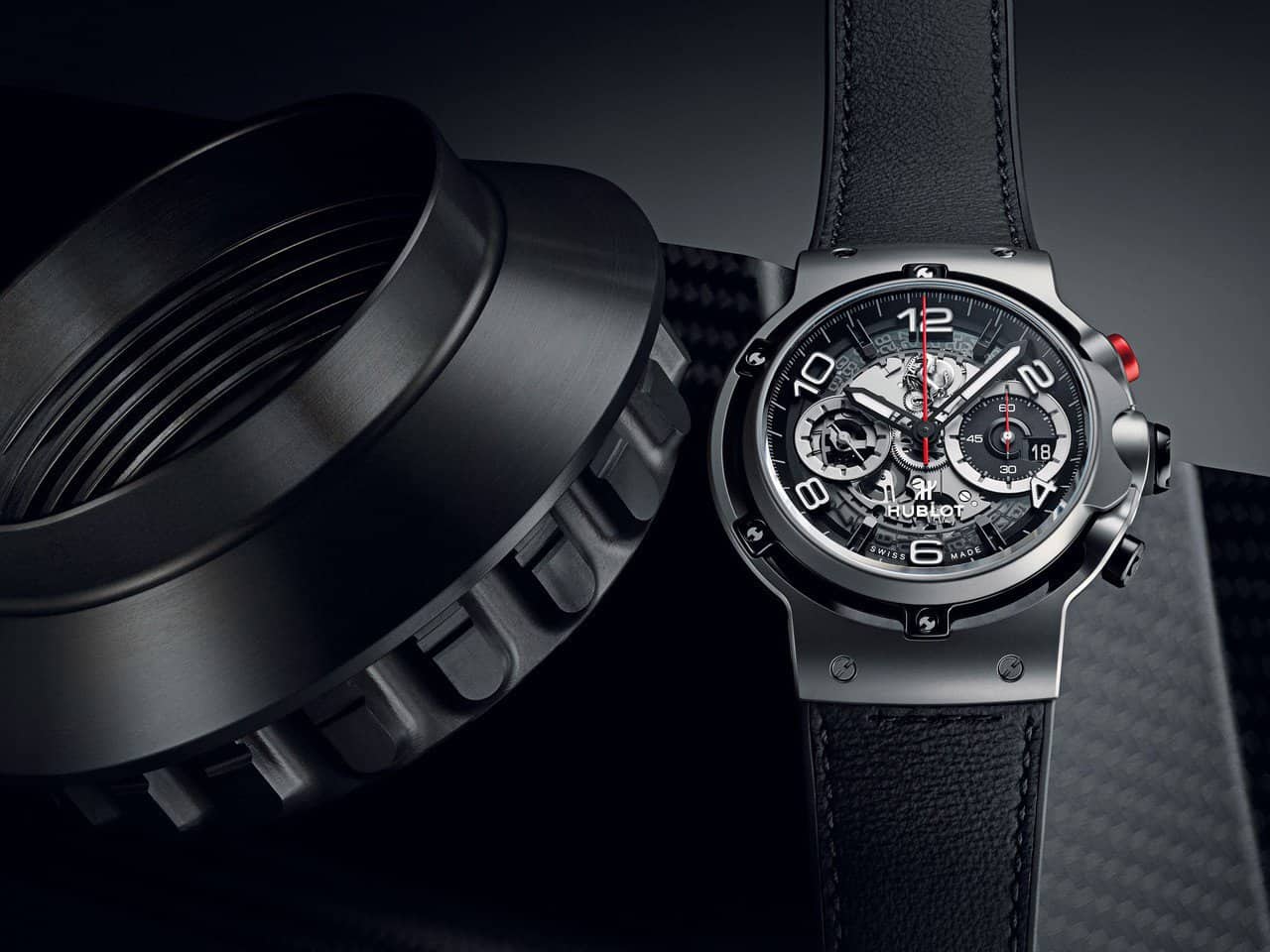
The world of motorsports and watches have a strong partnership, one that also functions off-track. And just like diving and flying, there’s a daredevil level of attraction that matches a racing timepiece.
TAG Heuer set the benchmark for racing horology in the 1930s by incorporating the chronograph and tachymeter that are characteristic of a driving watch. The brand solidified its racing pedigree when Steve McQueen wore a TAG Heuer Monaco 1133 in the 1971 movie “Le Mans.”
The names Heuer and Rolex aren’t the only ones associated with motorsports watches. Sports and driving watches like the iconic Omega Speedmaster abound, and brands like Longines and Hublot have long served as official timekeepers for Formula One events.
Normally, a race watch has a dial with a high contrast that is readable at fast speeds and rally-style leather or ergonomic rubber straps. Also, the case is angled so that the owner can see the time without taking their hand off the wheel.
How to wear: Racing timepieces are typically more flashy than dive or pilot watches. Due to their bold appearance, they are more appropriate for informal wear than formal attire.
6. Skeleton Watches
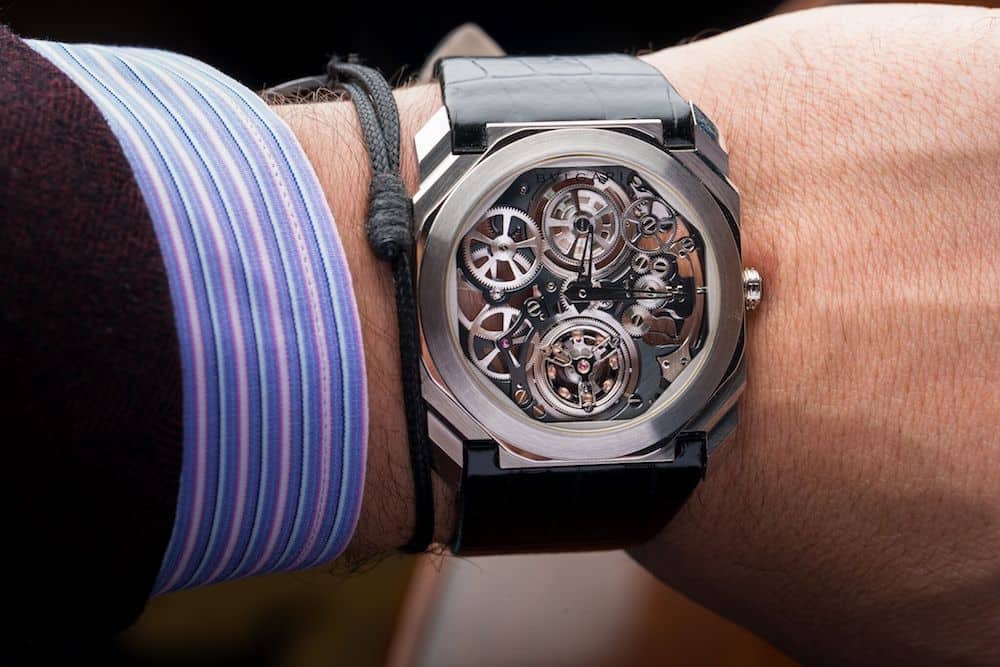
Skeleton timepieces are arguably the simplest to recognize as they are created with the sole purpose of savoring the intricacy, movement, and craftsmanship of a finely designed watch by removing the dial.
These watches have a subset of fans who understand the complexity of watchmaking and are not shy about showcasing it. Skeleton timepieces became popular in the mid-20th century thanks to brands like Breguet and Chopard.
7. GMT Watches
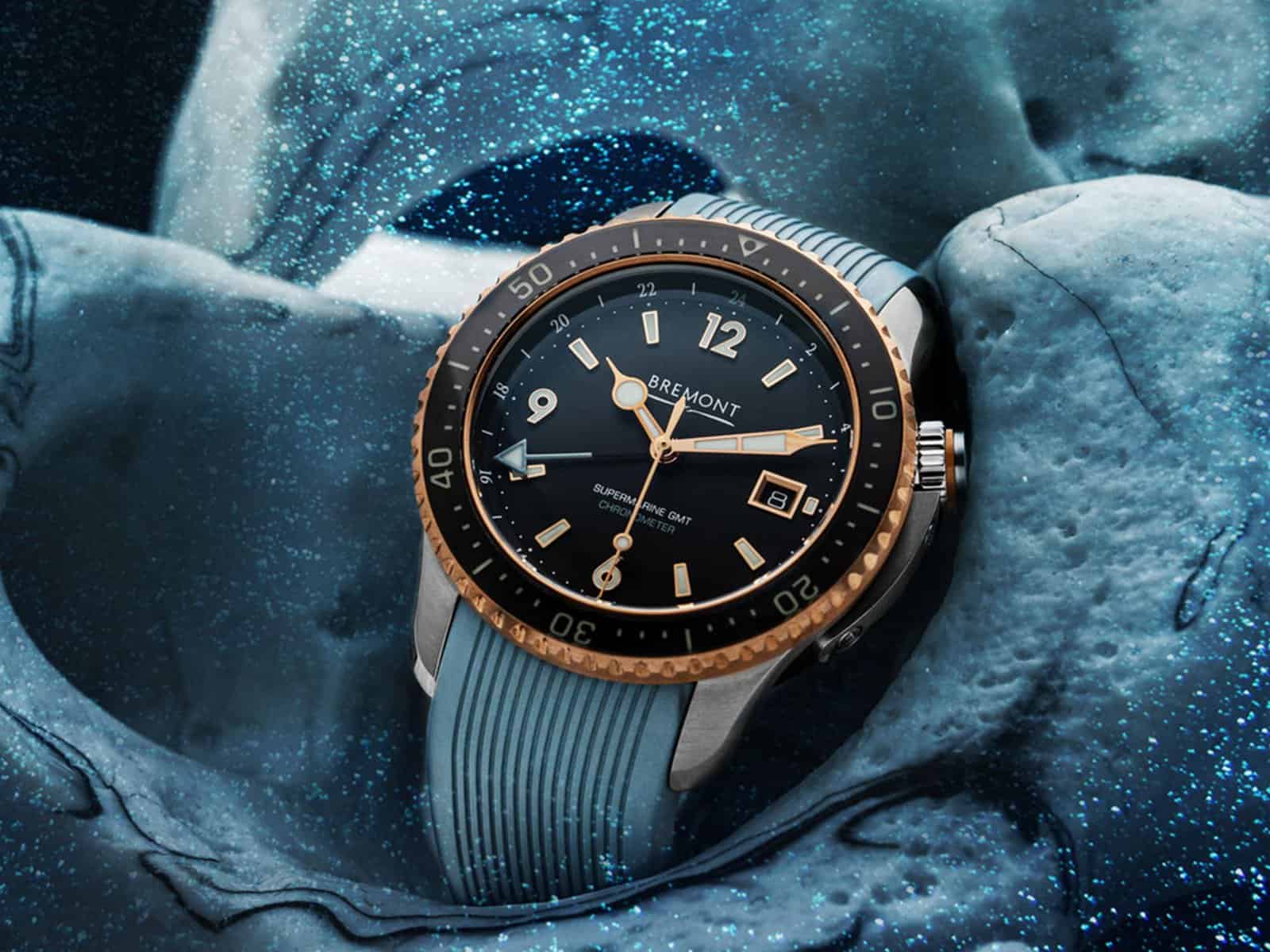
The single bonus of a GMT timepiece is the fourth hand, in parallel to the second, minute, and hour hands, that displays Greenwich Mean Time and fulfills a single rotation every 24 hours. This kind of watch might be useful for people who wish to monitor time in any other region of the globe.
In fact, the first GMT watch was created in 1954 by Rolex for British pilots to keep them posted on home time when they were engaged in transcontinental flights. Also, the bezel on a GMT timepiece can be turned to set different time zones.
8. Smart Watches
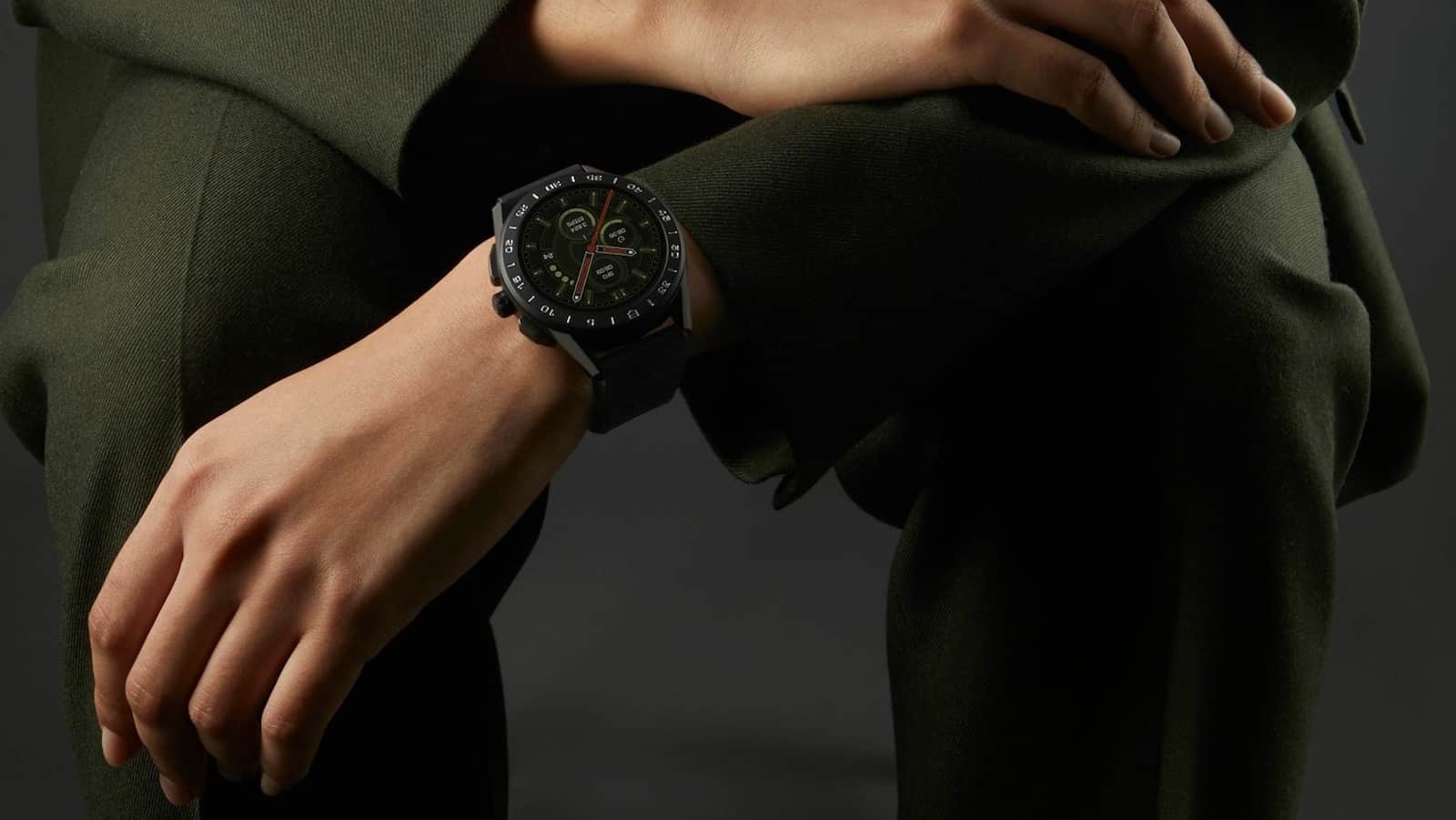
Thanks to the emergence of technology, watches currently arrive with an entirely new set of functionalities. Today, a smartwatch has become a must-have for some people, as it not only displays the time but also meets the needs of your lifestyle.
Lightweight and water-resistant, it is a wonderful partner for the gym as it monitors your heart rate, number of steps, and calorie count so you can precisely gauge the intensity of your activity. Furthermore, it plays songs, issues notifications, and carries out several additional actions.
Types of Watches Based on Their Movement
Have you ever wondered what makes a watch tick? Literally? The watch runs on a crucial piece of gear named “the movement,” also referred to as the caliber, which is a complex and prestigious mechanism. To further make things difficult, there are also several types of movements.
9. Mechanical Watches

Mechanical watches are treasured for the same reason that vinyl is valued over iTunes: it is important not only what something does but also how it does it. To the masses, a timepiece is a straightforward device for reading time. A highly engineered mechanical watch goes well beyond that as it symbolizes a man’s interests, personality, hobbies, and style.
For many connoisseurs, mechanical movement watches are the pinnacle of timepieces due to their classical genealogy and the precise craftsmanship and engineering required to produce them.
Mechanical watches are powered by a mainspring that is incorporated within the case. By manually turning the crown, power is released to run the watch. Although manual watches require winding daily, the typical power reserve is 40 hours. Some high-end watches have a standby time of 70 hours, which means they don’t need to be wound every day.
If you can hear a watch ticking, it is most likely a mechanical watch, as the ticking sound is caused by the unwinding of the spring that operates it.
Therefore, not all mechanical movements are the same. The quality and skill that go into making a watch will define its fineness and precision. And for many, this is nonpareil when it comes to what may be the most intricate handcrafted purchase of their existence.
10. Automatic Watches

Automatic and manual movements employ the same fundamental principles to tell time; the distinction relates to how the mainspring is wound. In this case, the wearer is not required to manually wind the watch to keep it running. Rather, the mainspring is wound by the natural motion of your wrist throughout the day-hence the term “automatic movement”.
These timepieces are also classified as self-winding models. Nonetheless, if the watch is not worn for an extended period, it will stop and require human winding. However, since, for the average automatic wristwatch, you may expect between 40 and 50 hours of not-worn endurance before it stops, you may easily remove it before bedtime.
11. Quartz Watches
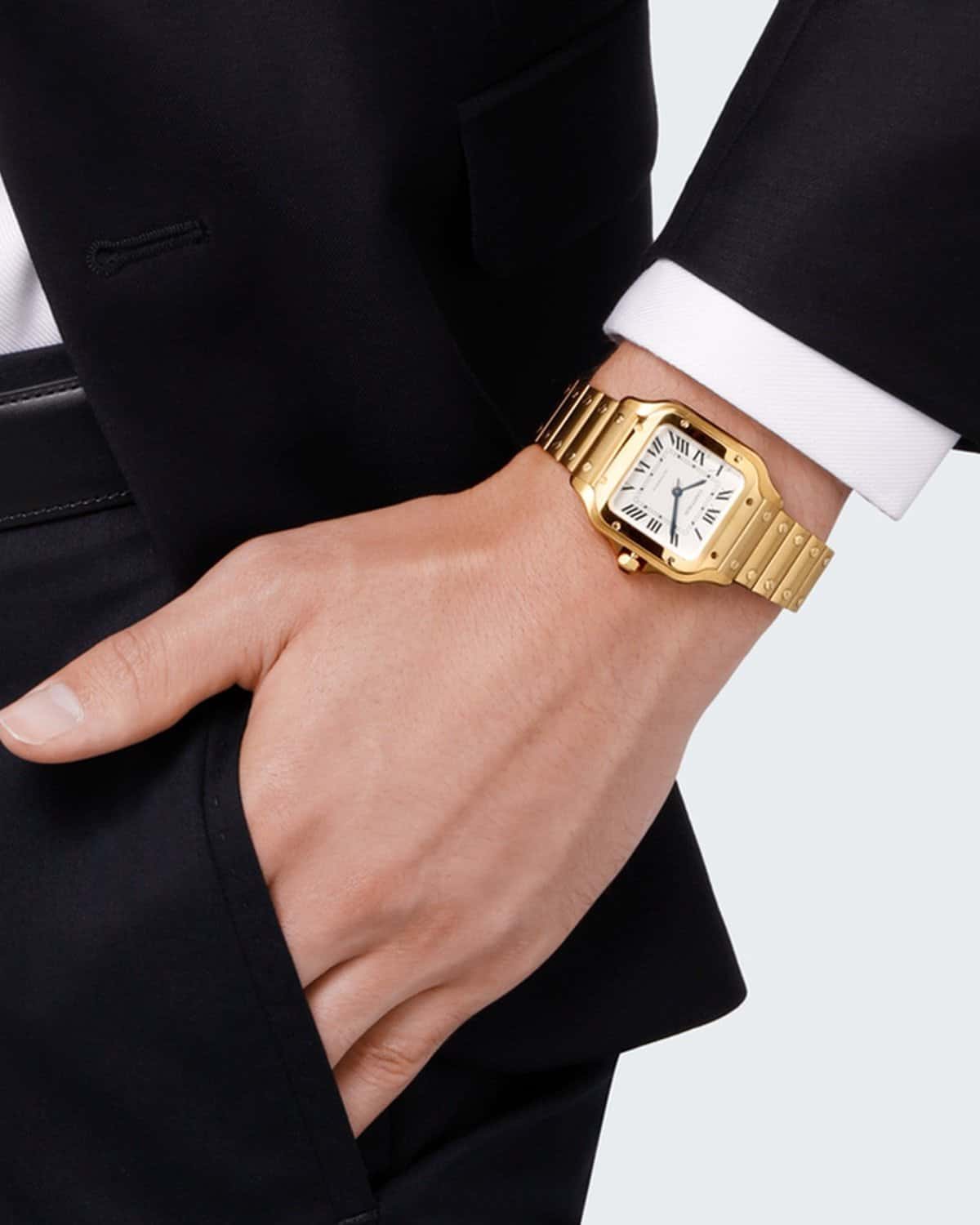
Driven by a battery and governed by a piece of quartz, these devices are large-scale manufactured and extremely reliable. When they were originally released in the 1970s, several companies were able to mass-produce fine and more affordable timepieces, leading the old guard to ponder how they would face the “Quartz Crisis”.
Thanks to their electronic structure, quartz watches are one of the most precise watch types, albeit they do occasionally need a replacement battery. They often operate without a ticking sound.
Quartz movements are fueled by a tiny battery rather than a wound mainspring. This causes the crystal to bounce 32,768 times per second as a circuit measures the vibrations and turns them into a pulse, which then moves the second hand of the watch.
12. Chronometer watches

Oftentimes, we talk about watches and use all of these specialized terms without understanding their meaning. “Chronograph” and “chronometer” are two words that appear to confuse people.
A chronograph is a device for accurately recording time, while a chronometer is a way of measuring time precisely. Identical, right? Not quite. Although these concepts are connected, they are not synonymous.
A chronograph is a timepiece with an integrated stopwatch function that measures elapsed time on request. This is called a “complication,” and most watches have two or three subdials that show hours, minutes, and seconds.
If a watch is described as a chronometer, it means it has completed rigorous accuracy tests over 15 days and received an authorized precision certificate from the COSC, which is the Official Swiss Chronometer Testing Institute.
A timepiece must operate within +6 and -4 seconds per day to attain this accreditation, indicating a chronometer is a brilliant and extremely accurate watch. Therefore, usually “chronometer” will be engraved on the dial of the watch that has gained this status.
A timepiece can serve as both a chronometer and a chronograph; nonetheless, neither function is inherent to the other.
13. Solar-Powered Watches
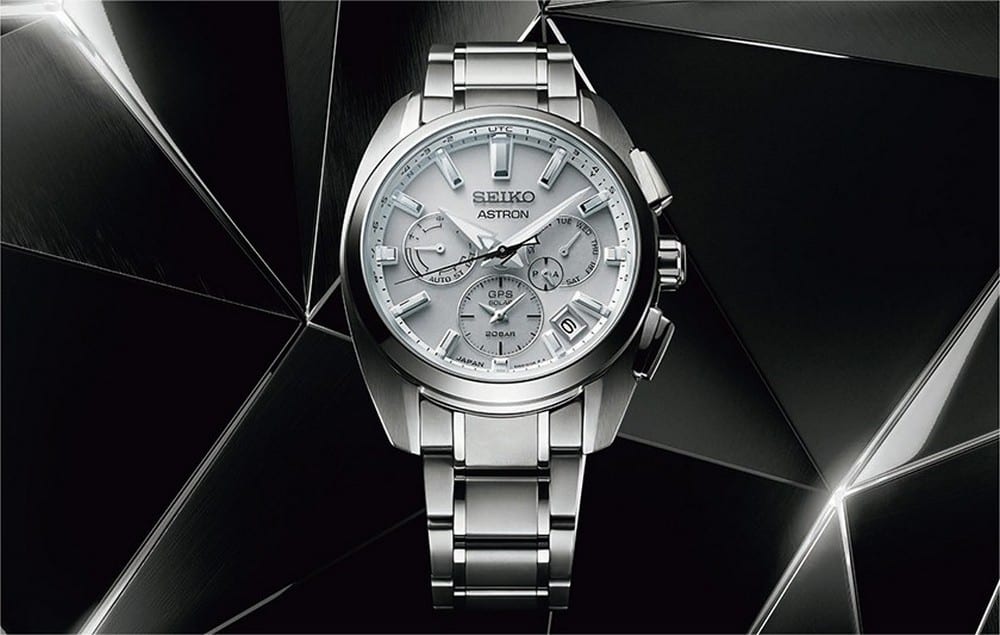
Although solar-powered watches aren’t as common as the others on this chart, that doesn’t mean timepiece aficionados don’t appreciate them.
These watches are driven by the sun’s rays, so their wearers do not have to be concerned with motion or purchase backup batteries. They are widespread among outdoor enthusiasts who enjoy trekking, swimming, or simply basking in the sunlight!
14. Kinetic Watches

Automatic watches contain a movement that uses a rotor to produce a torque on a wound mainspring, thereby converting wrist motion into power. A kinetic timepiece works much the same way, but the electric power of a kinetic watch is retained in a self-charging battery, making it a hybrid between a mechanical and a quartz timepiece.
Seiko pioneered the concept and released it in 1986. The power reserve of an automatic watch is at most a couple of days, whereas a kinetic timepiece can tell the time for several months when not worn.
15. Spring Drive Watches

It’s the year 1977, and a junior Seiko engineer begins to question how he could realize his aim of creating the eternal watch. In his concept, this meant a timepiece wound by a mainspring and accurate to one second per day, a degree of detail only the sharpest electronic timepieces could provide.
After almost 30 years and a lot of failures (including making hundreds of versions), he and his colleagues at Seiko were able to deliver innovations that changed the field as a whole. In 1999, the first Seiko Spring Drive was released.
The Spring Drive is a revolutionary watch mechanism that generates power like any other premium mechanical timepiece but combines it with an electronic Try-synchro regulator to provide a level of accuracy never achieved by a mechanical watch.
Types of Watches Based on Their Display Mode
16. Analog Watches
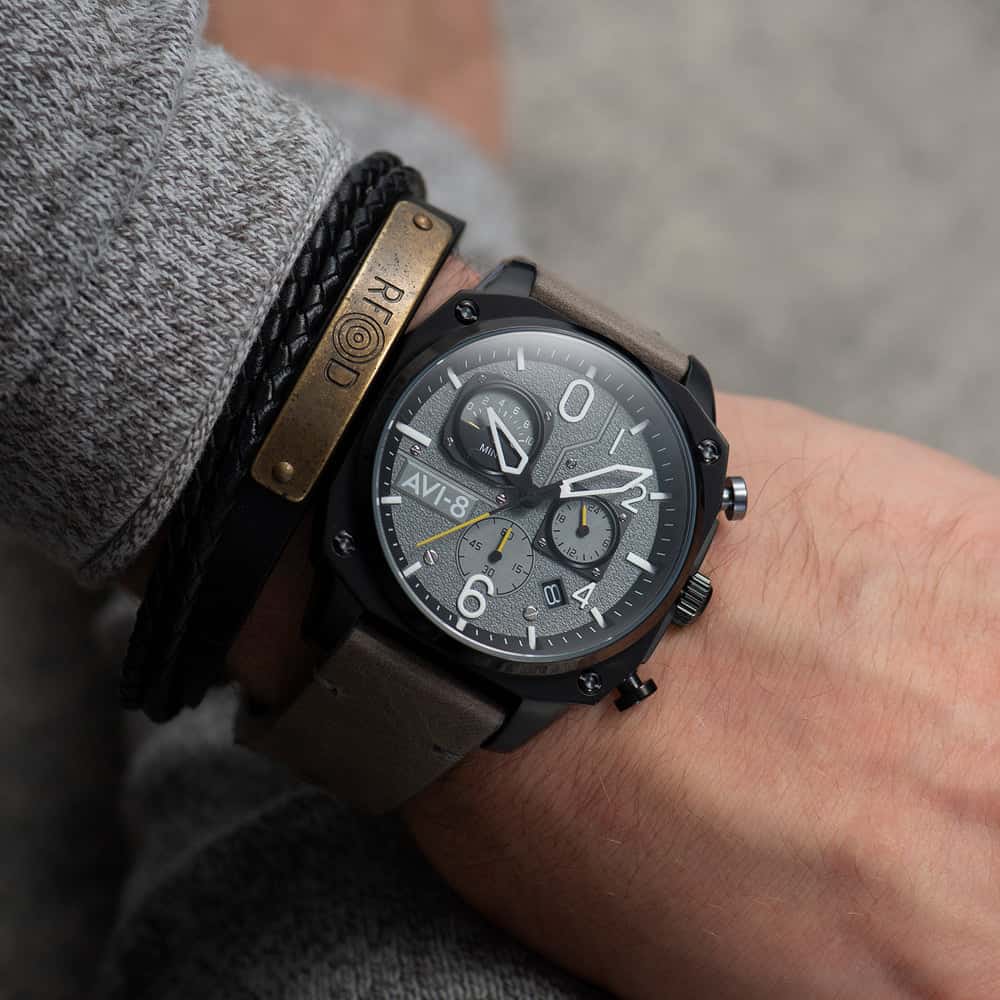
Analog watches are among the most prevalent types of timepieces. They are commonly referred to as “conventional watches” since they show time via a dial with hours, minutes, and seconds hands. Analog watches are popular among individuals who prefer to track time traditionally and are perfect for stunning appearances at social events of any kind.
Christiaan Huygens, who designed the balance wheel in 1656, developed the first analog clock, but the first wristwatch was built for Countess Koscowicz of Hungary in 1868 by Patek Philippe. However, it didn’t rise to prominence until after World War I.
Seiko’s 1969 release of the quartz wristwatch set the benchmark for battery-powered timepieces, and currently, 90% of the horology market is comprised of quartz watches, either analog or digital, and the most ubiquitous timepieces are analog quartz wristwatches.
17. Digital Watches

Compared to their analog forefathers, digital timepieces are light years ahead in terms of functionality and technology. People who are constantly on the move and have hectic schedules can benefit most from wearing digital timepieces.
In 1972, Hamilton released the first commercially available electronic digital timepiece. It employed a LED indicator beneath an artificial ruby crystal, and was coated in 18-karat gold. The display, which was generated by a complicated 25-chip circuit, was so power-greedy that it only briefly illuminated when the user pressed a button on the front of the device.
Since then, the digital watch has not only witnessed significant revolutionary changes but has also given rise to countless spinoff models with every possible feature. Nowadays, they are more like wrist-worn minicomputers than basic watches, as they have many attributes, including diaries, calendars, timers, GPS, and alarms.
18. Hybrid Watches

Smartwatches are excellent devices for monitoring notifications, checking health, and so much more. Be that as it may, nothing rivals the timeless appearance of an analog wristwatch. Conventional timepieces are uncomplicated and refined, flawless for any social gathering or business meeting.
If you’re looking for a gadget that resembles the elegance of a classic watch yet contains state-of-the-art technology, look no further. Buy yourself a hybrid watch! As you may have guessed, a hybrid watch is basically an analog timepiece with mechanical hands that combines traditional watch features with some of the brilliant functions of smartwatches.
19. Tactile Watches
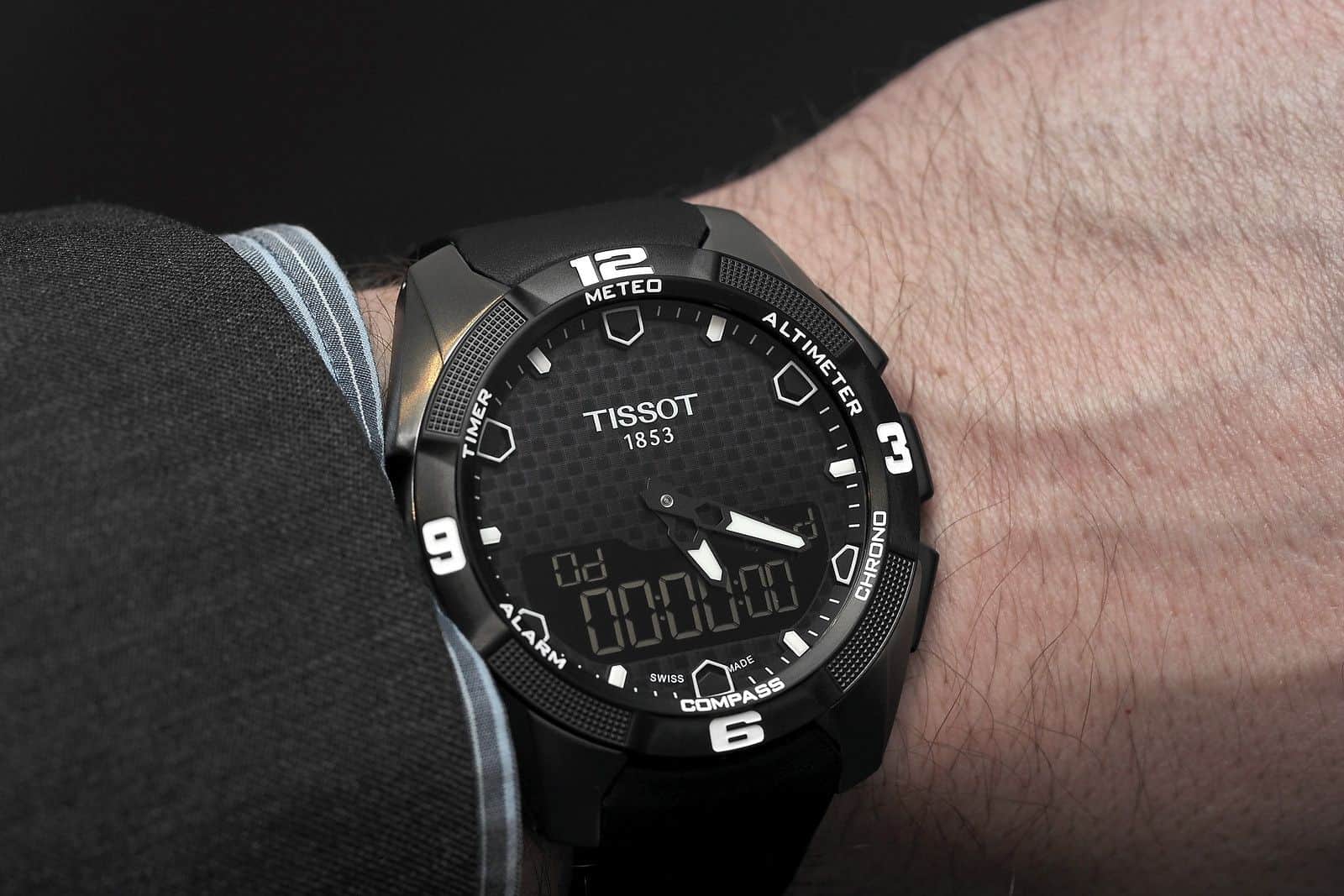
Tissot, a venerable timepiece manufacturer, has been on the flanks of high-tech creativity and novel ideas since its founding in 1853. In 1999, the brand produced the first T-Touch, a six-duty touch screen timepiece with a hybrid analog-digital screen, reflecting the company’s rich history of innovation.
The sapphire crystal and dial are triggered by pushing a button at the 3 o’clock position, and the owner can then access various functions by touching the glass in the appropriate places. Keep in mind that this was done way before the widespread availability of phones with touch screens.
This cutting-edge function makes the watch more comfortable and easier to operate. The technology can do a lot of different things, so it doesn’t need a lot of buttons or complicated sub-menus. It can be used as a chronograph, altimeter, compass, alarm, or to check the weather.
20. Touch Screen Watches
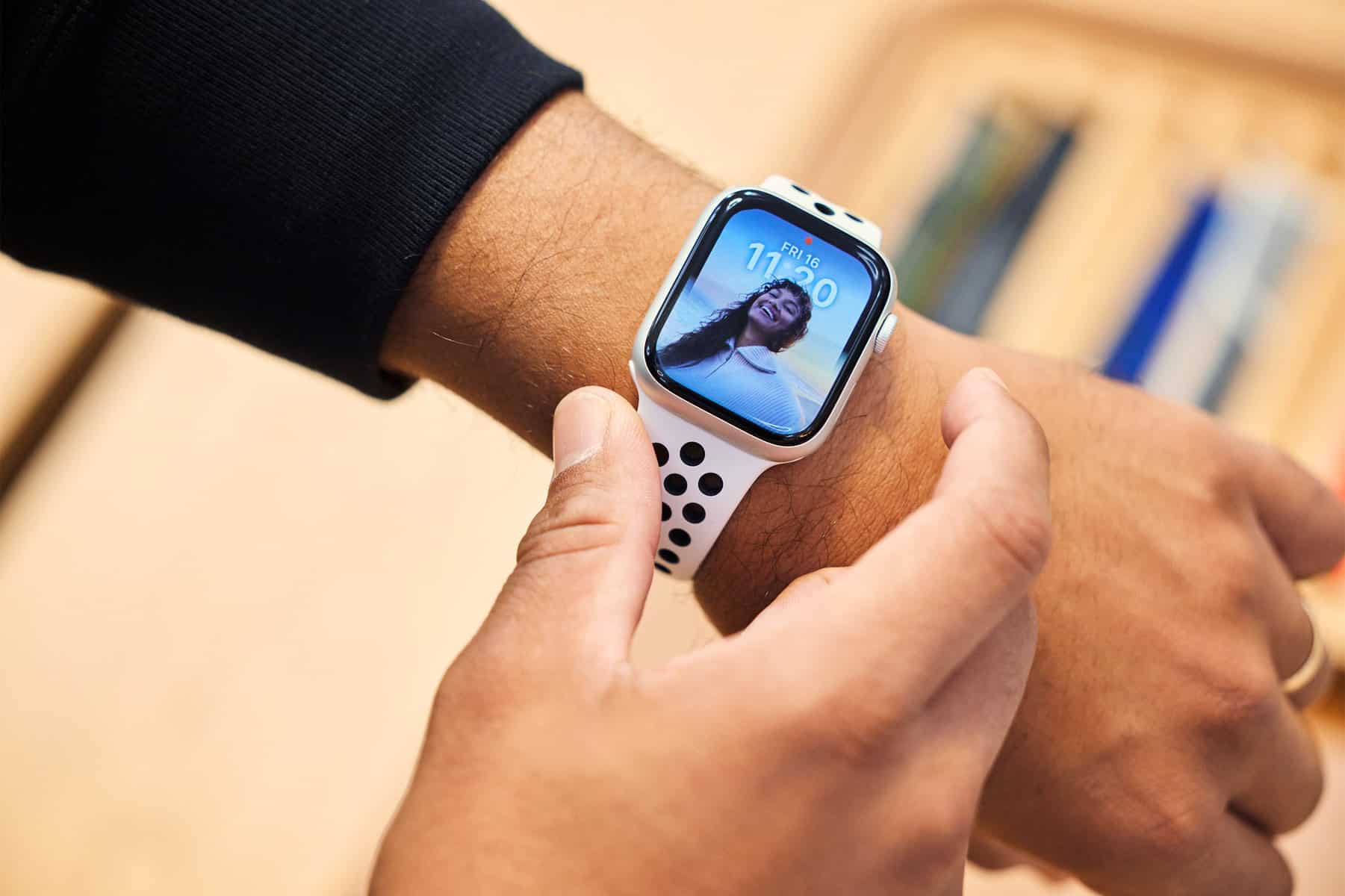
If you have a smartphone, you likely use a touch screen every day. The real kicker is that, owing to the introduction of touchscreen watches, you may now carry all these advantages on your arm. And touch screen watches are vastly superior to tactile timepieces.
This type of watch has no mechanical components, such as a balance wheel or winding mechanism, that degrade over time. Moreover, its sleek exterior also reduces the number of crevices where dirt can accumulate. So, even though a touch-screen smartwatch isn’t as stylish or iconic as a traditional analog watch, it has many benefits you can use.
This is Not the Final Chapter
This may appear to be a complete list of the various styles of watches currently on the market, but there are dozens more possibilities. There are timepieces built for nearly every industry and way of life, and they differ greatly in value, from a couple of dollars for a digital watch to millions for the most expensive high-end designs.
However, you should now have a better understanding of the most prevalent types of watches and why certain timepieces garner such prestige, admiration, and money.
You’ll eventually be able to explain, at least to yourself, why you forewent that perfect vacation for you and your spouse in favor of the lump of metal, glass, and leather you wear on your wrist with pride. Best of luck with it, though!

